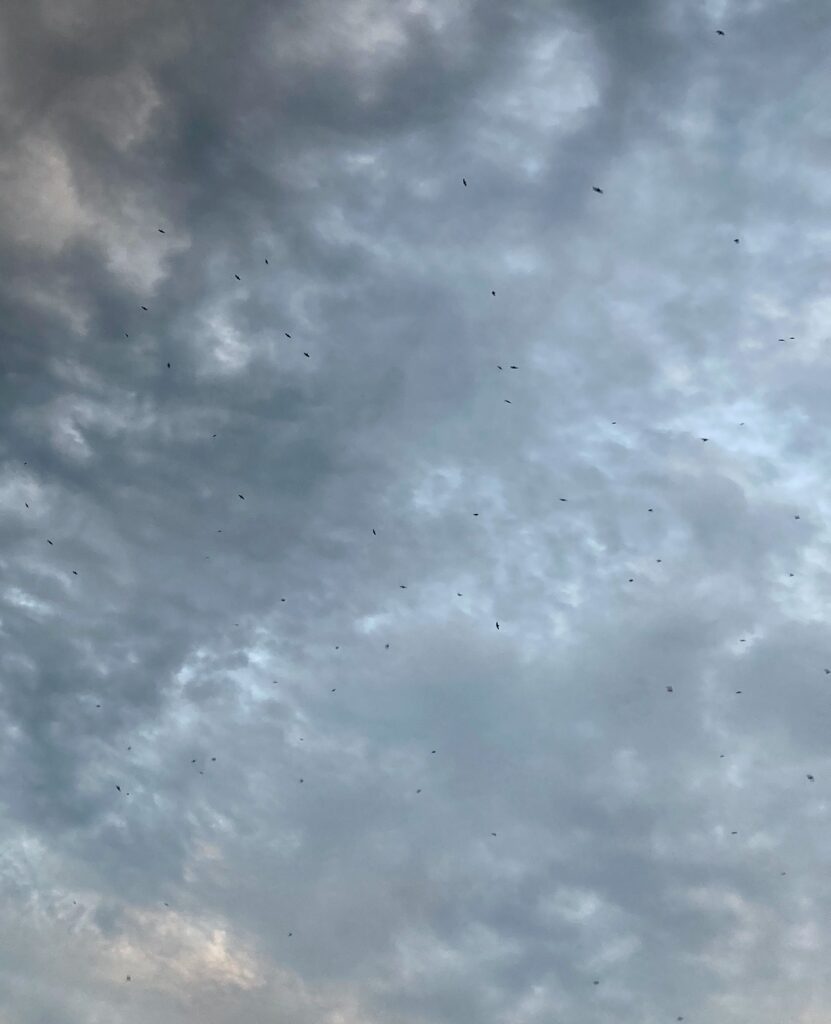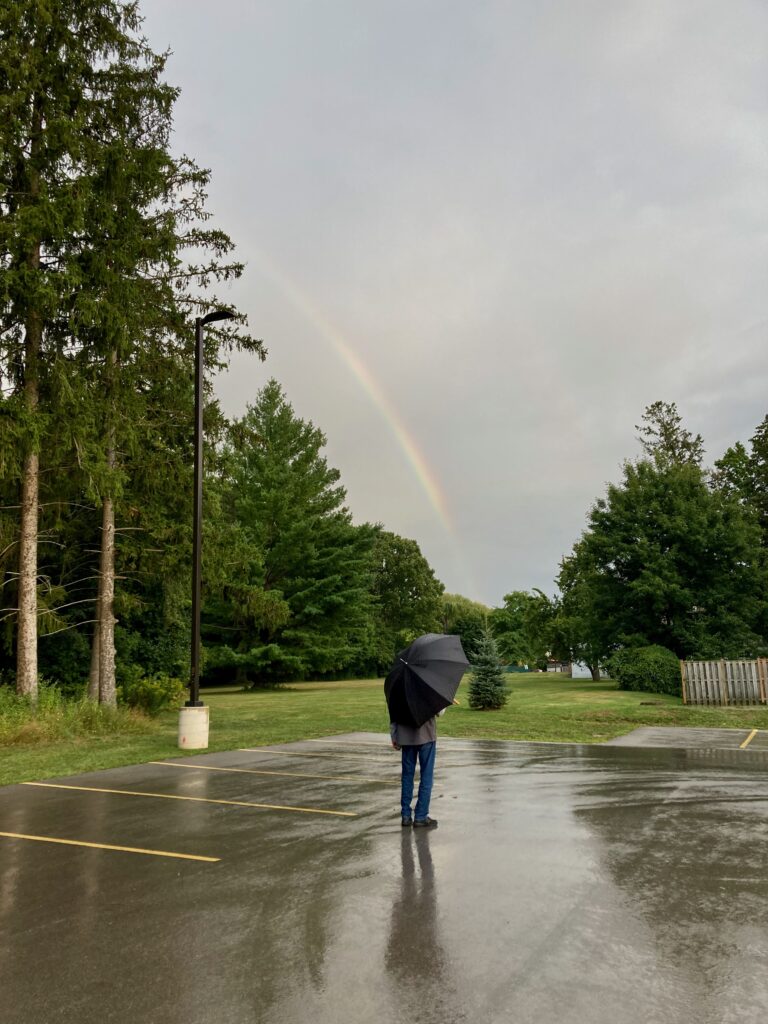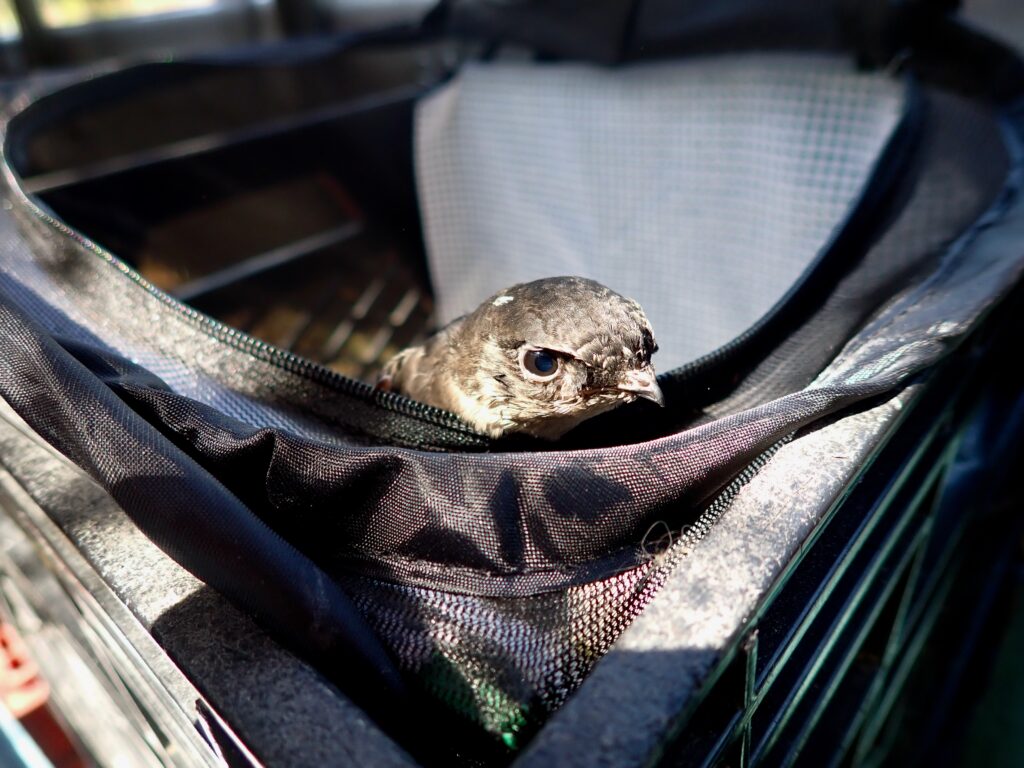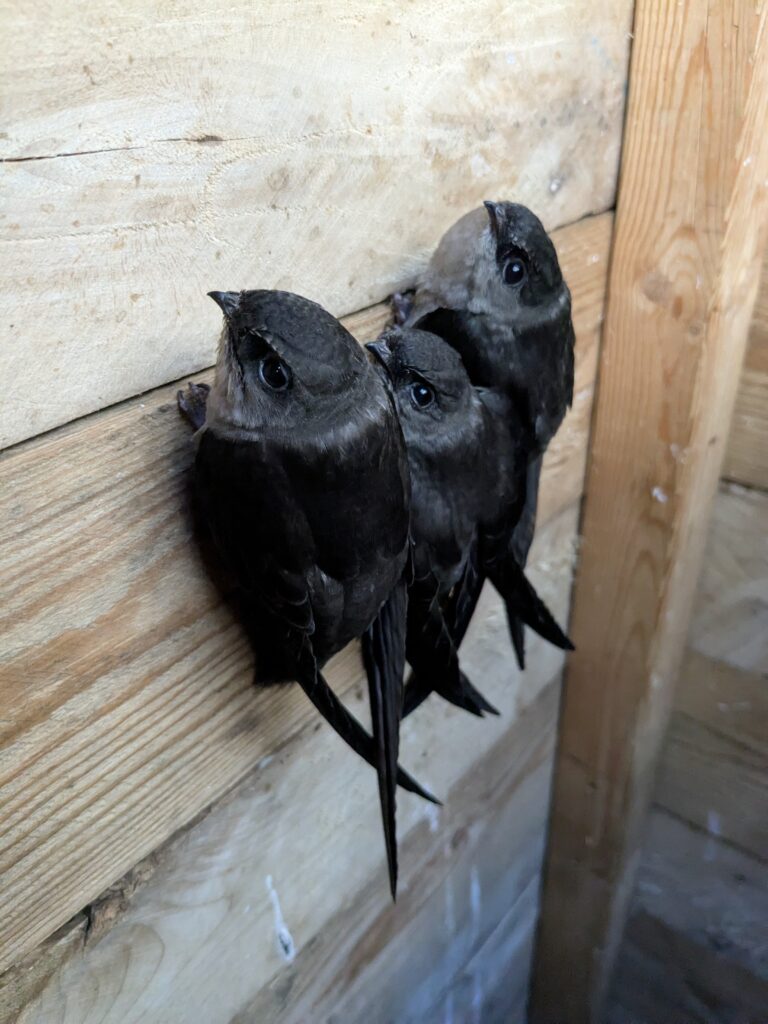The intense heat has finally receded. We are enjoying much cooler temperatures during the day and overnight, and we have had some much-needed rain.
Chimney Swifts
Over the past week or so, we have been preoccupied with our duties as the coordinators of Nature London’s Chimney Swift Monitoring Program. This has involved a number of late nights and time orchestrating willing volunteers to count the number of swifts entering chimneys at sunset.
Our program was recently contacted by Le Nichoir, a wildlife rehabilition centre in Hudson, Quebec. They were raising nine orphaned swifts that needed to join a large flock of Chimney Swifts on their migration to South America. All of the Chimney Swifts in the Montreal area had left for the season, but London, located farther south than Montreal, still had large roosts of migrating swifts. Nature London’s is the only program that monitors swift numbers through the whole season until they migrate south.
Last week, we helped a rehabilitation specialist from Destined to Fly near Kingston release one swift into a flock. After that, we needed to continue to track where there were roosts large enough to receive the nine young swifts. Waves of migrating swifts travel through London, but it is hard to predict where they will congregate or how long they will stay.
We monitor in all kinds of weather and sometimes see hundreds of swifts swirling in the sky before they cascade down a chimney for the night. On Tuesday night, the chimney we chose turned out to be perfect for the release of the nine swifts plus one bonus adult swift.




Birds on our neighbourhood walks
Throughout the year, we see the odd gull on the river. These are likely some of the gulls that reside near Lake Erie and Lake Ontario year round. In August, we more regularly see flocks of 30 to 40 Ring-billed Gulls on the river. These are migrating gulls that breed farther north and migrate to the southern United States for the winter.
Most of the gulls we have seen are adults with white heads and undersides, grey backs, black-tipped grey wings, yellow legs and yellow bills with black rings. There have been only a few juveniles with their mottled white and brown plumage and black bills that slowly transition to the yellow with black ring as they age.






Killdeer are medium-range migrants that breed throughout Canada and the northern United States, then move farther south for the winter.
Each summer, there has been at least one pair of Killdeers that nest along the Thames River in Harris Park. We often hear their urgent “killdeer-killdeer” cries from our balcony. In August, we’ve counted up to 10 Killdeers foraging in the river. These are likely the local Killdeer families as well as some migrants passing through. Soon, they all will be on their way south.




Greater Yellowlegs are shorebirds that breed across Canada north of the Great Lakes. Although they migrate through the London area, we do not expect to see them in the centre of the city. We were happy to find a pair of Greater Yellowlegs foraging in the Thames for several days in late July.





Great Egrets breed in a few spots in southern Canada, but spend the winter farther south. They nest in trees or bushes, often in colonies. We occasionally see Great Egrets along the river during the summer. Most often, we only see them in late summer or fall as they migrate. This handsome bird spent a couple of days along the river in Harris Park. It was unfazed by people walking the path along the river, unlike most egrets that take off when approached.







From the park, we saw the male Osprey perched on a light tower across the river. It then flew along the river, checking for fish. We have not seen the male as regularly over the past week, but still see it occasionally, sometimes consuming a fish on its usual light tower.



In early August, there were still very young robins in the park. Adult and juvenile starlings have started to gather in flocks in preparation for migration. The geese will remain for the winter, having lost their need to migrate from the urban environment.





We’re always on the lookout for pollinators: Western Honey Bee, Common Eastern Bumble Bee, and Cabbage White butterflies are the most common.






Sometimes, we have visitors to our balcony!
Northern Dog-day Cicada. These are also known as heatbugs for the loud buzzing sound they make in the hot weather. They acquired the “dog-day” name because they are associated with the hot, humid weather of the dog days of summer. Virginian
Tiger Moth. This is the moth that develops from the yellow woolly bear caterpillar. Its name comes from the orange and black markings on the moth’s body that are not visible in this photo.



We are always interested in what is growing and blooming in the park. Kentucky Coffeetrees are native to Southwestern Ontario. Fruit pods are now hanging from the branches of this tree. Himalayan Balsam (introduced), Dwarf Mallow (introduced), Redstem Stork’s-Bill (introduced).









This week’s flowers
Dahlias are now in bloom!

